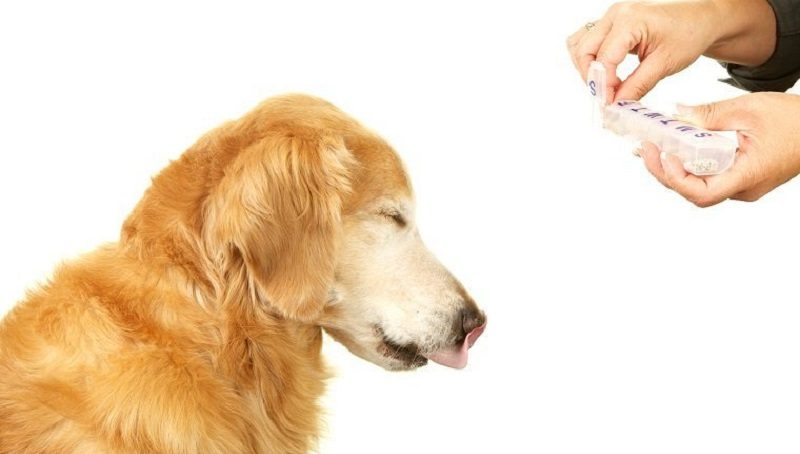Benadryl is often recommended to be offered to dogs. It can be safely given to most canines, but it is important to know exactly what Benadryl is, in what amount to administer it, and especially to know when your pet should take such medication so it won’t make it sick.
What is Benadryl?
Benadryl is the brand name of a medication called diphenhydramine hydrochloride, this being an active substance. Benadryl is an antihistamine medicine and does not require a prescription. It is found in the form of tablets, capsules, and liquid gels in different concentrations or milligrams. Sometimes it’s combined with other medications, so you’ll need to be sure to read the package prospectus carefully to make sure diphenhydramine is the only medication in the product you buy for your dog.
How does Benadryl work on dogs?
As an antihistamine, Benadryl blocks the release of histamine and acetylcholine that the body produces in response to an allergic reaction. Benadryl helps in situations where sneezing, excessive tearing, nasal secretions, itching, decreased swelling, and other allergy symptoms get out of hand. It is also often used to induce sleepiness in the dog, or to relieve motion sickness, for example, when traveling by car.
You might also like my articles on:
- Things to do when a dog is stung by a bee
- Why would a dog have blisters on the belly
- How to fix diarrhea in a pup
What symptoms are treated with Benadryl?
Dogs that can benefit from taking Benadryl are usually those who may have allergies or car sickness. Some specific examples of using Benadryl are:
- When a dog is bitten or stung by an insect.
- When a dog is bitten by a venomous reptile.
- When a dog feels itchy and scratches itself from environmental or food allergies.
- When a dog travels and may suffer from motion sickness.
- When a dog needs something to make him a little sleepy, so he doesn’t get impatient, bored, or barks when he needs to be calm and quiet.
- When pre-treatment with an antihistamine is required before vaccination that is known to cause an allergic reaction in that dog.
 It is advisable to have Benadryl on hand if you have a dog, even if you never intend to travel with him or he does not have known allergies. You never know when a spider will bite or a bee will sting your dog while you are at home and you will need to give it Benadryl to prevent or reduce an allergic reaction.
It is advisable to have Benadryl on hand if you have a dog, even if you never intend to travel with him or he does not have known allergies. You never know when a spider will bite or a bee will sting your dog while you are at home and you will need to give it Benadryl to prevent or reduce an allergic reaction.
Some dogs react so severely to venomous insects or reptiles that they cannot breathe without antihistamines and immediate veterinary attention. If you can treat a dog that has been bitten by a snake or stung by an insect at home, you will increase your chances of getting to your veterinarian with him alive and still breathing.
This is especially true for brachycephalic breeds, such as English Bulldogs and Pugs, which naturally have compromised airways, even without the added constriction that an allergic reaction can cause.
When should you avoid giving Benadryl to dogs?
Benadryl can help when allergic reactions or motion sicknesses appear or create sleepiness, but that does not mean that it is always appropriate to use it in dogs. A few reasons why you should not use Benadryl on dogs include:
- If you have a very stressed or anxious dog and want to make him sleepy. His anxiety and stress must be addressed and treated instead of sedating him with Benadryl alone.
- If the animal has heart disease.
- When the dog has high blood pressure.
- When the dog has glaucoma.
- When the dog is being treated with other medicines, you should discuss with your veterinarian beforehand whether Benadryl is safe to take.
- Do not use Benadryl as the only remedy after a venomous bite. The dog needs immediate veterinary attention.
The veterinarian is the best source of guidance and information for your dog’s health. If you’re thinking of giving the dog Benadryl, then ask your veterinarian first to make sure you’re not doing more harm than good.
Proper Dosage of Benadryl in dogs
Dogs usually take about 2 mg of Benadryl for every kilogram of body weight or 0.9-1.8 milligrams (mg) of Benadryl per pound, two to three times a day. This means that a 10-pound dog will take a maximum of 20 mg of Benadryl up to three times a day, depending on your veterinarian’s recommendation. Dosage for small dogs can be made easier using Benadryl in liquid form, baby syrup.
Potential side effects of Benadryl
Benadryl can make a dog very lethargic, cause dry mouth or urinary retention, and some gastrointestinal disorders, such as diarrhea and/or vomiting. In cats, it can cause the opposite of what is used for, called a paradoxical effect, and you may be dealing with agitation instead of sleepiness.
Overdose of Benadryl
Benadryl is historically safe, but like any medication, too much can do harm. If your pet gets too much Benadryl, it can be extremely lethargic or very agitated. Occasionally, the mouth may dry, the dog might have respiratory depression, or seizures, go into a coma, or the medication can even be fatal if given in a very large amount.
An overdose can be fatal. If your dog takes more Benadryl than the recommended dose, call your current veterinarian or poison control helpline immediately at (888) 426-4435.




